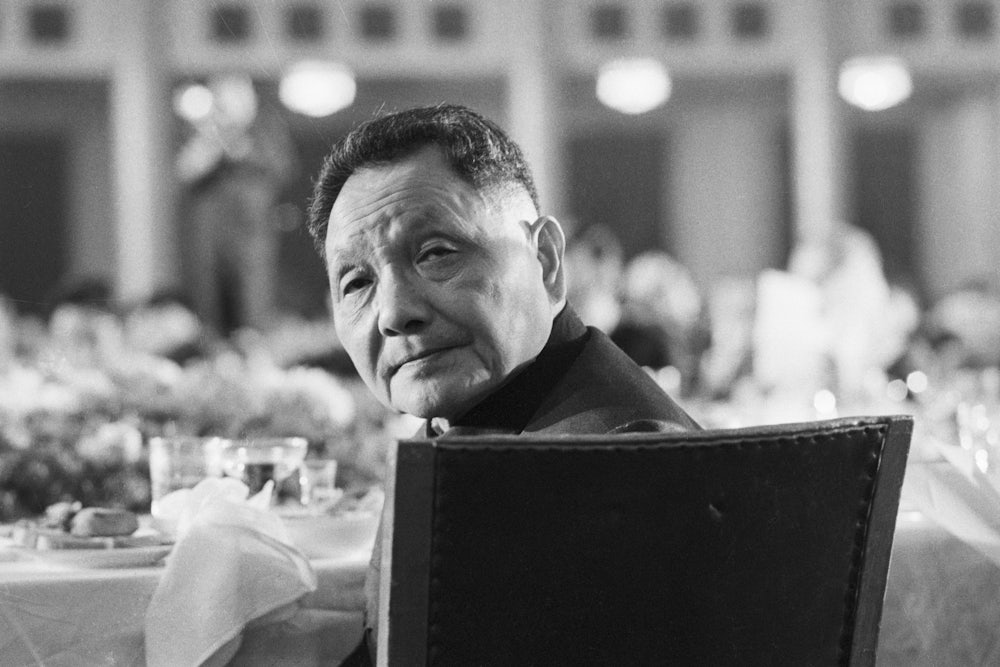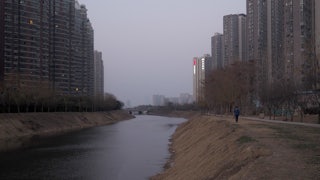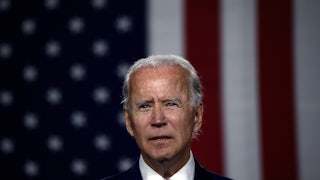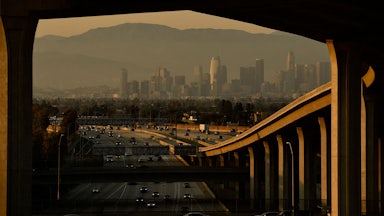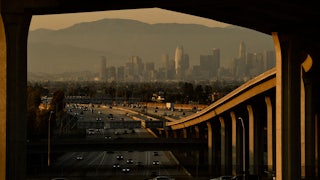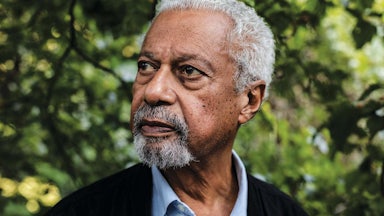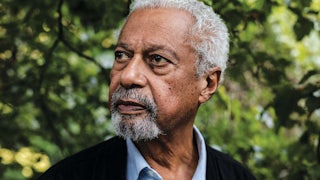The sovereign, as George Orwell once observed, has an inveterate habit: He exerts control over not just the present but the past. Books are burned. Dissenters are purged. Official records are written—and then rewritten. The signal revelation of Orwell’s dystopian classic, 1984, is that the past is mutable and therefore vulnerable; it survives in fleeting, unguarded snippets like papers and memories. Today, Anglo-American life is riven by deep contests over history as it relates to its founding myths. But these trials are predicated on a liberal luxury: In many autocratic societies, there is no debate at all. History is what the sovereign says it is, and naysayers dwell in a dark, discursive void.
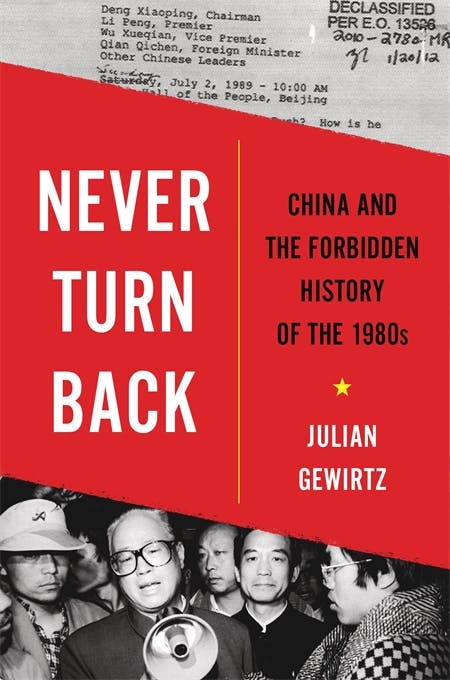
This blotting out of the past finds a capable practitioner in the Chinese Communist Party. Fang Lizhi, a well-known Chinese dissident, once estimated that the Party’s internal power struggles meant the shape of history was erased from Chinese society “about once each decade.” Near the end of the millennium, there was mounting hope that the Party’s technique of “forgetting history” would crumble amid an informatized, interconnected world. The internet would become an eternal store of memory. Twenty-four-hour news spawned a global public hungry for news of coups and cover-ups. A year after the Party faced one of its greatest political tests, at the carnage of Tiananmen in 1989, Fang, in a preview of the post–Cold War consensus to come, rang the Party’s death knell. “No longer will the Chinese Communists be able to hide beyond the reach of world opinion,” he wrote. “The real history of last year’s events cannot possibly be forgotten.”
Could it not? So much has changed in the ensuing decades. While most readers recall the bloody events of June 4, 1989, they no longer grasp their meaning. For those who came of age during a rising China, Tiananmen is often one interlude in the 40-year saga of Chinese economic ascendance. Readers today will likely recall the Chinese leader Deng Xiaoping and his fabled 1978 policy of “reform and opening up.” They will be hard pressed to remember someone like Hu Yaobang, who spearheaded those reforms and whose political exile and death would trigger a cascade of events culminating in the June massacre. What the stories of these purged officials indicate is a fate-altering decade rife with contradiction and galvanizing force, but the memory of China’s 1980s today is largely that of a single, contextless day.
These distortions are no accident. Although the Party had failed to excise memories of the crackdowns, it succeeded in obfuscating the very forces that begot them: the multiple paths to modernity that China’s leaders once entertained. Contrary to the teleological faith in the “China model”—the unique blend of statist control and market economics that the Party favors today—the 1980s were one of the most indeterminate periods in modern Chinese history. It was this uncertainty that spawned a decade of daring experimentation and imagination. Now that President Xi Jinping has secured a precedent-breaking third term, dragging the country into an ever-narrowing view of national greatness, the 1980s stand as a critical inflection point: the moment when many possible futures collapsed into one.
Never Turn Back: China and the Forbidden History of the 1980s is a delectable rehabilitation of a momentous decade. Julian Gewirtz, the director for China at the National Security Council and former lecturer at Harvard University, reveals just how many different futures China’s leaders countenanced in the dawning post-Mao years. The Party’s fundamental task was to decide what “reform” meant for China, and this did not lend itself to clear answers. The devil was often buried in details over price reforms, technology policy, and political liberalization. So leaders often equivocated, their positions shifting as the decade progressed. Today, China touts its brand of state capitalism as though it were an item plucked—with supreme foresight and wisdom—from the menu of modernity. Gewirtz debunks this myth and shows us how China came to convince the world of it.
Part of the myth-busting involves a reassessment of Deng Xiaoping’s role in China’s reforms. After the Cultural Revolution, the stout Chinese leader, who had emerged victorious from his own power struggles, led the moral reckoning that sent China down its market-driven course. But he did not know how to navigate. That task was often left to his designated successors: Hu Yaobang and Zhao Ziyang. Through trial and error policies—and at great personal and political risk—these figures filled in what Deng had only conceived in broad outlines. Contrary to mainstream opinion, Gewirtz portrays Deng as a geriatric ruler prone to self-contradiction. Throughout the decade, it was often Deng’s protégés who would “fill in Deng’s gestures.”
Born in 1919, Zhao Ziyang was China’s third premier and the Communist Party’s highest-ranking official from 1987 until his ouster in 1989. In Gewirtz’s telling, Zhao appears as one of the unsung architects of China’s reforms. He laid the conceptual ballast for the fabled “world’s factory,” the idea that China’s competitive advantage in global markets would come from its cheap labor supply and raw material imports. He helped China rejoin the World Bank, which opened new sources of investment and economic expertise. At a time when China’s leaders were eager to send students abroad, Zhao personally asked Margaret Thatcher to lower the fees of Chinese students. With patience and intellectual humility, Zhao engaged face to face with a number of Western thinkers, from the acerbic Chicago economist Milton Friedman to the futurist writer Alvin Toffler. Until the late 1980s, Zhao was set to be an unforgettable figure for any history of modern Chinese reforms.
The fall of 1987, Gewirtz writes, was the “high watermark” of Zhao’s power. That year, Zhao ascended to the post of CCP general secretary, the position occupied currently by President Xi Jinping. At the thirteenth Party Congress, he would ratify an ambitious work report that cemented the market’s place in the Chinese economy, while outlining steps toward bold political reforms, including separating the party and state. Zhao also introduced a new term for China’s political system, one that resolved incongruities between Marxist scripture and capitalist systems. China, in Zhao’s new conception, was in the “initial stage of socialism.” These ideas were so compelling that they have been reincorporated into Xi Jinping Thought.
Throughout the 1980s, the forces of reform and conservatism raged, often within the same person. (Deng had offered mixed signals throughout the decade and clearly held both impulses.) That Zhao ascended to the top post just years before the Tiananmen crackdowns epitomized the protean nature of Chinese elite politics. But some popular ideas persisted. Among them was the belief that market reforms were inextricably linked to political change. “The success of all our other reforms depends on the success of the political reform,” Deng wrote in 1986. Wang Huning, who is now the highest-ranking propagandist in Xi’s inner circle, argued a year later that China must adopt a “highly democratic political system,” if it were to establish itself as a modernized country. Strikingly, some of the most conservative Party leaders exhibited liberal leanings in the 1980s.
But if Zhao sat comfortably within China’s Overton window in 1987, the consensus was quickly unraveling. In 1988, a botched price liberalization campaign triggered an inflation spike that threatened the legitimacy of Deng and Zhao. The spread of revolutionary fervor across Eastern Europe emboldened Deng’s self-preserving instincts. The release of a viral documentary called River Elegy, which cast Zhao as the budding leader of a spiritual democracy movement, threw more suspicion onto the Party’s reformists. Hu Yaobang’s untimely death in April 1989 set off a protest in Tiananmen Square, which expanded to broader calls for democracy and an end to elite corruption. As the crisis escalated, Zhao made a fateful blunder: He traveled on an official trip to North Korea, entrusting the handling of the demonstrations to the Party’s hard-line faction. By May 1989, the conflict had become intractable. Deng, together with a conservative majority, declared martial law. On May 19, a broken, teary-eyed Zhao popped up at the square for the last time. He urged the students to leave and delivered a now famous message: “Students, we came too late.” For Zhao, it was a matter of timing.
After the crackdowns, the Party moved to reorder reality. Thousands of officials were purged. Patriotic education campaigns flourished. Zhao was put under house arrest, his contributions to the decade reassessed in light of the bloodied victors. The pre-Tiananmen impulse for reform at all costs would give way to the post-Tiananmen orthodoxy of stability above all else. In this surgery of the past, the Party would credit Deng with being the “chief architect” of the reform era, and Zhao—who had collaborated closely with Deng throughout the decade—would be cast as its “distorter and destroyer.” Zhao was effectively erased from the historical record, his death, in 2005, announced on the fourth page of the People’s Daily under an article related to post-tsunami inspections.
The centrality of Zhao in Gewirtz’s picture of the 1980s is double-edged. Over the years, new source material, including a collection of Zhao’s writings released clandestinely by his associates and family members in Hong Kong, has opened up new avenues for Chinese scholars. Yet the availability of these sources may mean an overemphasis on Zhao over other figures. A better balance of the decade’s movers and shakers would require a larger space for Zhao’s predecessor Hu Yaobang, another worthy candidate for the “architect” title.
But this may all be beside the point. Regardless of who is the true architect of China’s reforms, what Gewirtz argues convincingly is that this very attribution is a political choice. The Party doesn’t think primarily in empirical terms (“who did what?”) but in ideological ones (“who should we say did what?”). In China, politics precedes truth. Deng became the hallowed architect not by virtue of fact but because the Party’s mechanism of self-preservation required it. The Party imposed its own reality.
In this next chapter of Xi Jinping rule, cemented over the weekend at an important political session, a new reality is emerging. Deng, the “chief architect of reform and opening,” has been supplanted by a new protagonist of modern China: Xi Jinping. What is the purpose of studying this history if, as Fang Lizhi once observed, it is “erased about once every decade”?
The truth, for one thing, is intrinsically valuable, but Gewirtz’s book offers two other answers. The first stems from the simple fact that China’s future is unwritten. The 1980s, in this view, remains a “usable past”—a repository for the Chinese imaginary and potential source material for a new future. (It is also, I might add, a “usable past” for emerging countries wishing to cut through the false dichotomy between a China model and an American one.)
The second is that reality has a way of biting back. After Xi abolished term limits in 2017, China’s social media buzzed with messages quoting Deng’s 1980 speech on political reform, warning against the “overconcentration of power.” It was a potent example of how a despot’s historical erasure is never without cost—a buried past becomes a threatening one.
More recently, there has been a fantasy, prevalent in Xi’s China, that there lies, beneath the layers of Western influence, an autochthonous Chinese nation-state gloriously waiting to emerge. Gewirtz deconstructs this framing: China’s relationship to the West was never “one of ‘infiltration’ or ‘rejection,’” he writes. It was a “full spectrum of partnering dynamics—picking and choosing, reformulating, occluding, and disguising influence.” Chinese identity can no sooner survive without its Western connections than American identity can survive without its links to the rest of the world. To conduct such a surgery is to invite absurdities and contradictions. (China’s persistent refusal to accept Western-made mRNA vaccines, for example, has thoroughly undermined its claim to have the most competent response to the Covid-19 pandemic.)
The title of Gewirtz’s book is fitting. Once uttered by Deng Xiaoping, “Never turn back” is an effective motto for mobilization but not for reflection and recalibration. There is little daylight between China’s messianic drive for socialist modernity and the triumphalist narratives at the end of the Cold War: Both present history as destiny, a predetermined course inimical to alternatives. Connecting world history, development economics, and political theory with a lyrical style, Gewirtz has written an exceptionally wide-ranging book for a new generation. The reformists of the 1980s will be remembered for their fearless experiments with modernity, and when the triumphalists are disproven, their stories will be told anew.
